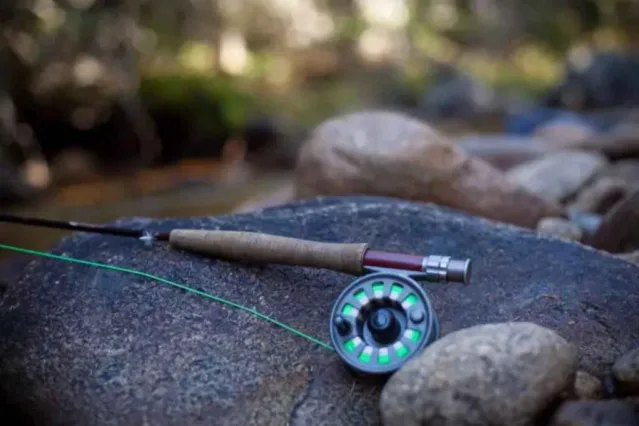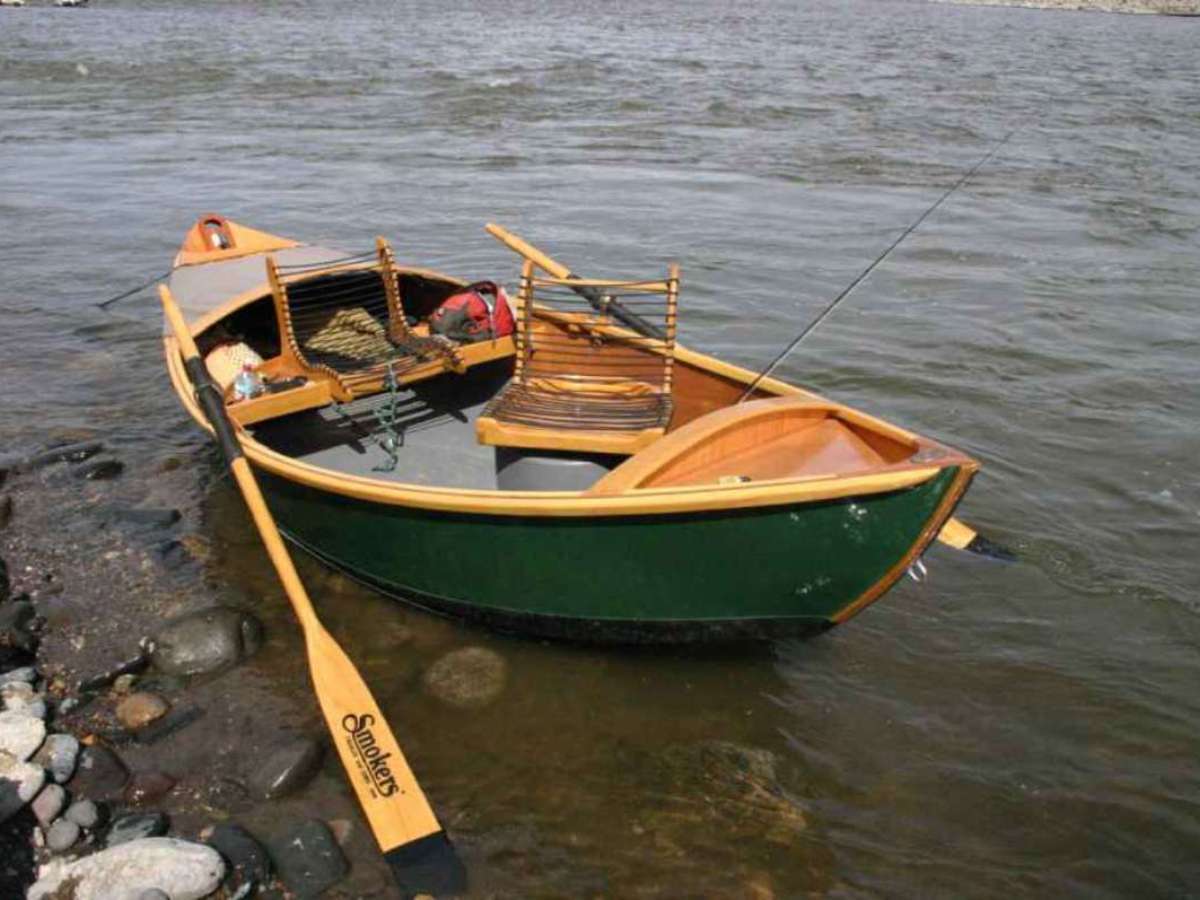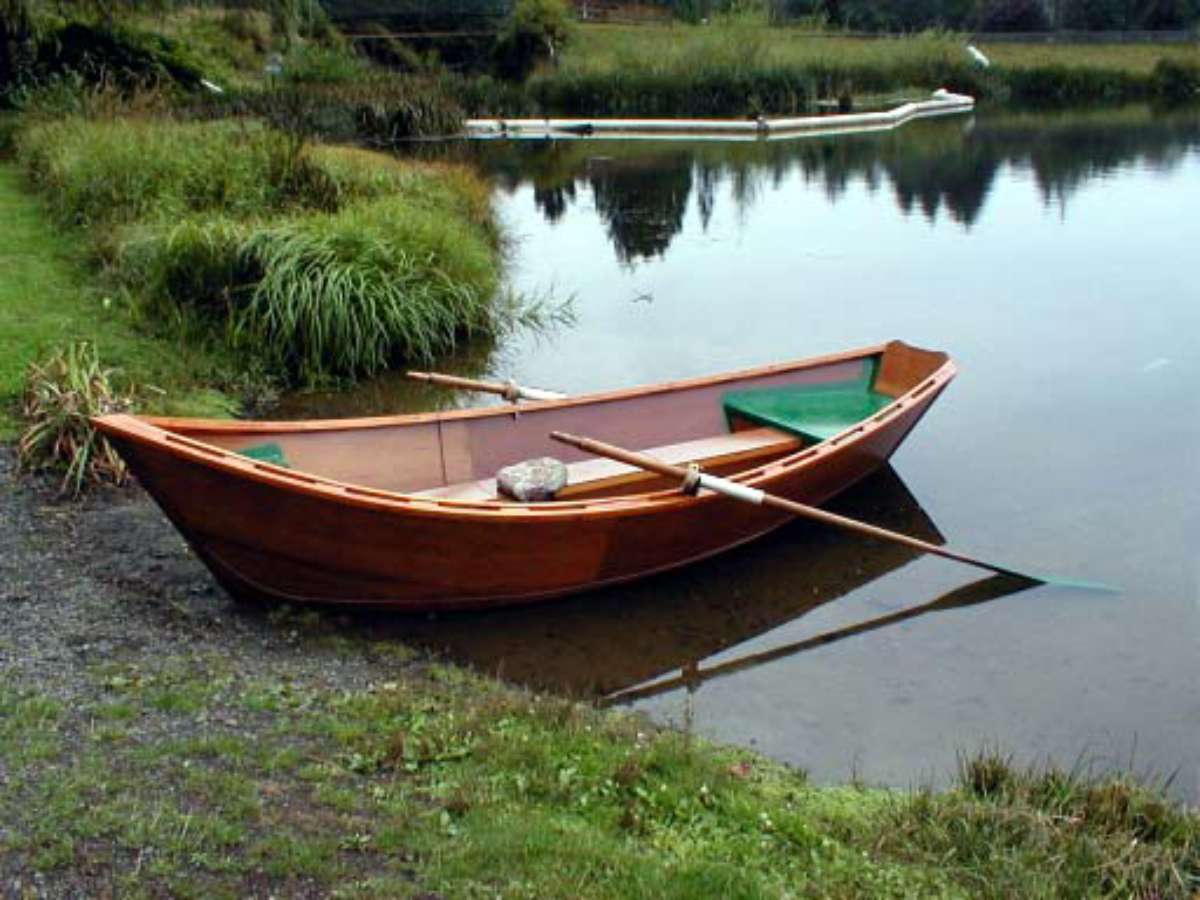Let’s take a look at the many types of fly fishing line – which is totally different from other types of fishing line.

When fly fishing, the line weight carries the fishing fly (which is almost weightless) to the water.
That’s why things like line weight and tapers are important.
We’ll start by looking more closely at those 2 things…
Fly Line Weight
In fly fishing, weight matters.
The line weight is what bends your fly fishing rod which, in turn, sends the line forward.
The rating given to a line is a measure of its weight when 30 feet of line are out of the rod.
– Source
The fly fishing line that you purchase will be rated according to weight, one being the lightest.
The higher the number, the heavier the line.
Many fly fishing anglers use fly fishing line that is rated between 4 and 6.
These lines are used on fly fishing rods that are rated for a particular weight of line.
At the same time, certain weights of line are used for catching particular fish species.
Here are some examples:
- Fly fishing line weight of 1 to 3 is used for small trout and panfish.
- 4 to 5 weight fly line is best for freshwater bass, and trout.
- 6 and 7 weight line is good for bass, bonefish, pike, stripers, and trout.
- 8 and 9 weight fly fishing line is used for bluefish, bonefish, salmon of all species, and stripers.
- 10 to 12 weight line is for tarpon, swordfish, and other large game fish.
These are only suggestions and can be used as a guide when deciding which line weight you should use.
Graphite rods allow for some leeway in the weight of fly fishing line.
If you’d rather, you can move up or down a weight of line from these recommendations.
Many rods will have a rating that covers more than one weight eg. #6/8. This indicates that the rod can cast a #6, #7 or #8 line. In this instance it is likely that the rod would be best with a #7 line in the hands of an experienced caster.
– Source
Fly Line Tapers
Fly fishing line almost always has a taper. This means it is larger in diameter in one part and tapers to a smaller diameter.
The most common taper today is “weight forward” which means the fly line is heavier in the head. So, the first 25 feet or so of line that goes through the guides of your fly rod is the heaviest. This allows for rapid momentum, and the head weight carries your fly fishing line forward. Essentially, this simply means your weight forward line is perfect for delivering your fly to the fish.
If you see a fly forward line that has a taper that is highly exaggerated, it will be marked bass-bug or saltwater taper. Today, the majority of fly fishermen use weight forward tapers.
Double tapers are not as common today as they once were. Their design is slim on both ends and flat in the center. This allows your fly fishing line to hit the water near the fish with little noise or splash. Many fly fishermen simply use a lighter fly fishing rod and line if they wish to have a more delicate approach.
Read: Double Taper vs Weight Forward, Which is Really Better?
Weighted Flies vs Weighted Fishing Line
To catch fish that are not feeding surface or subsurface, you will need weight on your line.
At one time fly fishing anglers used weighted flies and you still can if you wish.
However, it is much easier to use lead core fly fishing line — which means the line has a lead inner core.
You can also use sink tips to fish at a greater depth. This allows the end of the line to sink, while the remainder of the line floats — which also makes casting easier.



